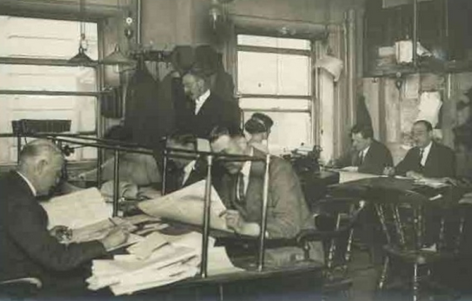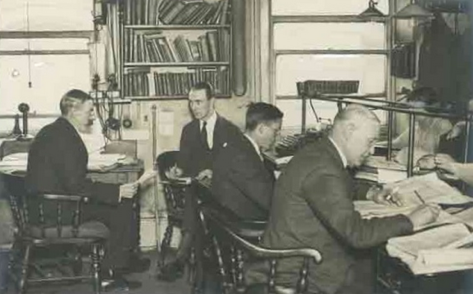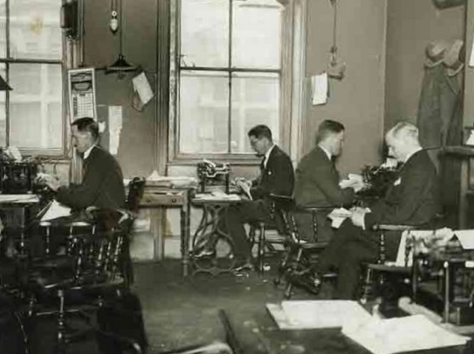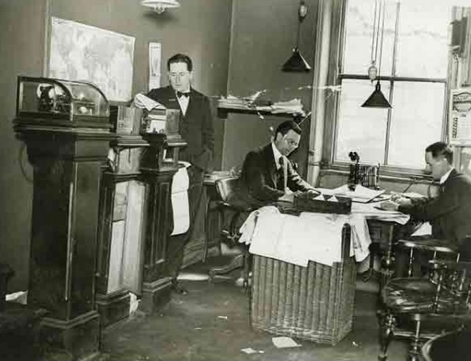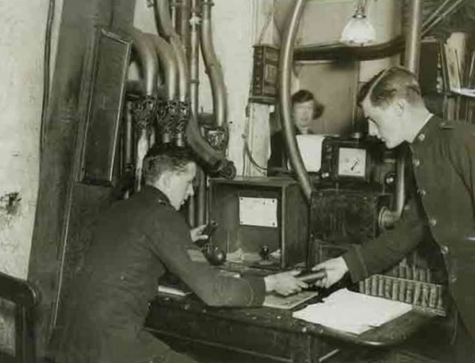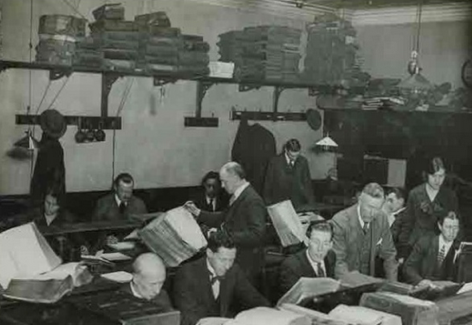Archives
Women at work: the early years
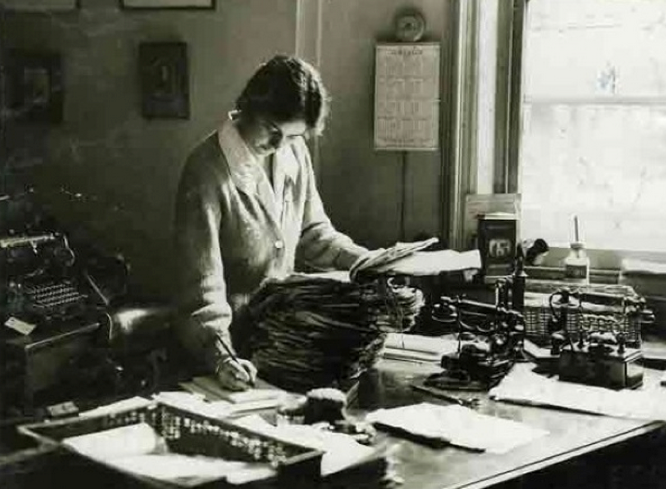 Head bowed, she looks down as she stands, writing on a note pad, with a large stack of files piled high on the desk. Around her, the technology of the time: a typewriter and three telephones - one a candlestick type and two only slightly more modern. Her hair is long in the fashion of the day nearly a century ago (the bobbed style of the twenties is not yet popular), and she wears a woollen cardigan over her open-neck blouse. Her stance is relaxed, as though she is unaware her image is being captured for posterity. Spring sunlight streams through a sash window. The calendar on the window sill shows that the date is Tuesday 15 May. The year: 1923.
Head bowed, she looks down as she stands, writing on a note pad, with a large stack of files piled high on the desk. Around her, the technology of the time: a typewriter and three telephones - one a candlestick type and two only slightly more modern. Her hair is long in the fashion of the day nearly a century ago (the bobbed style of the twenties is not yet popular), and she wears a woollen cardigan over her open-neck blouse. Her stance is relaxed, as though she is unaware her image is being captured for posterity. Spring sunlight streams through a sash window. The calendar on the window sill shows that the date is Tuesday 15 May. The year: 1923.
Unidentified, all that is known of her is that she worked at Reuters’ long-established headquarters in a street named Old Jewry in the City - then as now the busy heart of London’s financial district. Ninety years ago, Reuters’ editorial department occupied two rooms. After 52 years at Old Jewry, a narrow connection between the historic thoroughfares of Cheapside and Gresham Street, the agency was about to move west to larger premises in Carmelite Street, closer to Fleet Street and thus more convenient for most of its customers who were located there at the centre of the British newspaper industry.
Someone thought of asking a photographer to take pictures of people going about their work at the old office before they all moved to the new office. Though they are all now long dead, what they were doing on that day, what they looked like and how they worked has been fixed forever in a cache of photographs kept in company archives. Some of them were reproduced in The Power of News: The History of Reuters, published in 1992.
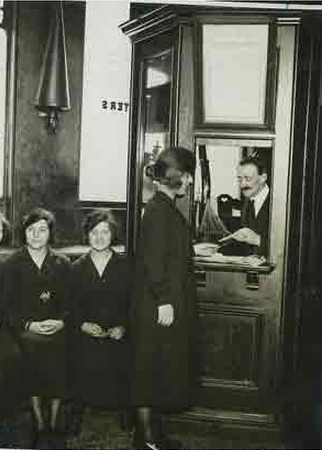 One of the greatest social changes that occurred in the ten years before these photographs were taken was the increasing employment of women, albeit in relatively lowly jobs. By the time these images were captured girls and women were an established presence in offices. This change, seismic in its implications for female emancipation, was accelerated by the absence of men who had been sent in their thousands to fight in France, Belgium and farther afield in the Great War that began in 1914.
One of the greatest social changes that occurred in the ten years before these photographs were taken was the increasing employment of women, albeit in relatively lowly jobs. By the time these images were captured girls and women were an established presence in offices. This change, seismic in its implications for female emancipation, was accelerated by the absence of men who had been sent in their thousands to fight in France, Belgium and farther afield in the Great War that began in 1914.
One photo, right, shows members of the uniformed corps of Reuters messenger girls. With them is the head timekeeper, ‘Spike’ Webb. The girls’ job was to deliver by hand a hard-copy back-up of each story transmitted by machines called column printers to the offices of the London newspapers.
In another two women are seen at work. One of them, Hilda Webster, is a typist wearing headphones to take down a telephone report of a debate in parliament. Later, she would marry a Reuters journalist, Bernard Maloney. One of the photos shows the editor, Herbert Jeans, issuing instructions to Maloney.
Another photo provides confirmation that, by 1923, Reuters’ offices were lit by electricity rather than by gas. A coal-burning fireplace provided the only heat in the room. Hence the woollen cardigan worn by the anonymous young woman at the desk. ■
- « Previous
- Next »
- 24 of 49
